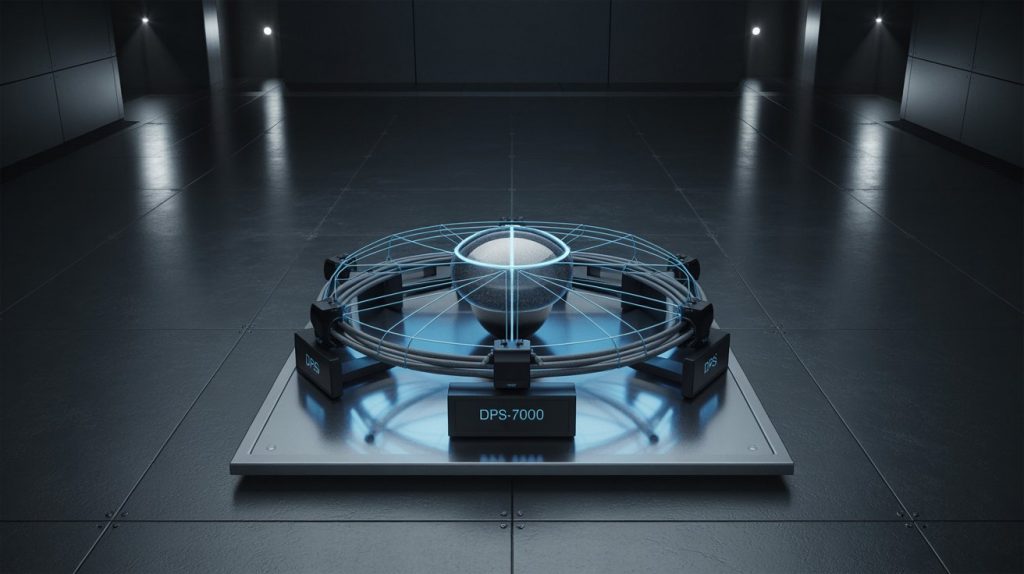This report examines the dynamic positioning system market from 2025 to 2030. It outlines various industry and technology trends currently influencing this market. The dynamic positioning system market is projected to grow from an estimated USD 6.36 billion in 2025 to USD 8.65 billion by 2030 at a CAGR of 6.3%.

The market is advancing with the introduction of new technologies that enhance operational safety and efficiency. Real-time environmental intelligence enables vessels to adapt to changing sea conditions, improving stability. Multi-sensor fusion and redundancy enhance reliability by integrating data from various sensors. Digital twin technology allows for vessel improvements in virtual environments. Additionally, condition-based monitoring tracks the system’s performance, facilitating timely maintenance. Remote and autonomous dynamic positioning features are also increasing efficiency by reducing the risk of human error. These innovations are significantly shaping the future of the dynamic positioning system market.
Download PDF Brochure @
https://www.marketsandmarkets.com/pdfdownloadNew.asp?id=44881766
Based on equipment class, Class 3 is the fastest-growing segment in the dynamic positioning system market. This class is used for high-risk offshore operations like deepwater drilling and subsea construction, where safety and precision are crucial. DP Class 3 systems ensure that a vessel can stay in position even if one part of the system fails, thanks to full backup systems for power, control, and propulsion. To take advantage of this growing segment, market players can focus on creating and certifying advanced DP Class 3 systems that meet strict requirements from organizations like the International Maritime Organization (IMO) and classification societies such as ABS, DNV, and Lloyd’s Register. Providing systems with high fault tolerance and full redundancy will help companies lead in this important market.
Based on ship type, commercial vessels are the largest segment in the dynamic positioning system market. This segment includes offshore support vessels, cruise ships, ferries, cable-laying vessels, and tugs. These ships need accurate DP systems to hold their position safely during marine operations. Companies can grow in this segment by offering better DP systems that help with tasks like building at sea, setting up wind farms, and laying cables. Upgrading vessels with smart controls, fuel-saving engines, and hybrid systems helps meet green rules and improves safety. As offshore energy and safe marine work grow, so does the need for advanced DP systems.

The dynamic positioning system market is predominantly led by Europe due to its robust offshore energy sector, particularly around the North Sea. Countries such as France, Norway, the UK, the Netherlands, and Denmark are global leaders in offshore oil, gas, and wind energy projects, necessitating advanced systems to maintain precise positioning of ships. European shipping companies prioritize safety and adhere to strict regulations while embracing cutting-edge technology. This demand drives manufacturers of DP systems to develop smarter solutions, incorporating automatic controls, backup components, and energy-efficient designs. France is emerging as an important player in the dynamic positioning system market, particularly as it expands its offshore wind energy initiatives and enhances its naval capabilities. Although France has less offshore oil & gas activity, notable wind farms like Saint-Nazaire are operational, and new floating wind projects, such as Bretagne Sud, are in development. These floating wind farms require advanced DP vessels for installation and cable laying. The country is also integrating dynamic positioning technology into its naval ships to facilitate critical operations, including logistics support and underwater mine detection, enhancing safety and control in naval missions.
Across Europe, floating wind farms are becoming more prevalent, which increases the need for advanced DP systems in clean energy projects. Governments are pushing for greener ships and smart marine systems, encouraging more investment in electric-powered and automated DP vessels that can operate with better control and lower environmental impact. Organizations like DNV and Bureau Veritas (BV) ensure these systems follow strict rules. As the region moves toward cleaner energy and digital tools, the demand for advanced DP systems with smart control, condition checks, and automatic features will keep growing across commercial and naval ships by 2030.
Key Market Players:
Key players in the dynamic positioning system market include Kongsberg Maritime (Norway), Wärtsilä (Finland), GE Vernova (US), ABB (Switzerland), Sirehna (France), NAVIS (Russia), Rolls-Royce plc (UK), RH Marine Netherlands B.V. (Netherlands), Royal IHC (Netherlands), and Brunvoll AS (Norway). These companies are well-represented geographically and offer a wide range of products. They operate worldwide and provide a variety of products. To grow their market share, they rely on their diverse product portfolios and R&D capabilities.
